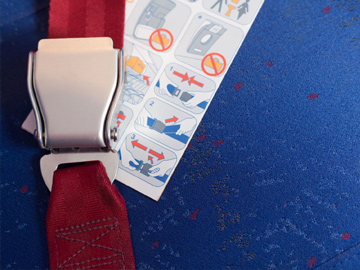
Aircraft passengers are being reminded to fasten their seatbelts at all times while seated after a Virgin Boeing 737 encountered wake turbulence.
The incident occurred on 13 September 2012 when the aircraft, carrying 132 passengers, was en route from Bali to Brisbane. While in cruise, the 737’s crew spotted an aircraft above, approaching from the opposite direction. The aircraft passed about 0.9 Nautical Miles to the left and 1,400 ft above.
About one minute later, the 737 experienced cobblestone-like turbulence. It then rolled slightly to the right and then suddenly to the left to an angle of about 40°. The crew managed to arrest the roll and straighten the aircraft. The incident occurred as a result of wake turbulence from an Airbus A380 aircraft.
A wake turbulence encounter can be a surprising experience for both the crew
and passengers...
Fortunately all the aircraft’s passengers were seated at the time of the incident and there were no reported injuries. The flight continued without further incident.
Pilots receive six-monthly jet upset simulator training to prepare them for situations when an aircraft experiences pitch or roll conditions greater than normal. Both the captain and the first officer of the 737 had received their training within the past two months—the captain’s training took place within the week before the incident. They both reported that the training was invaluable, with the first officer remarking that his response to the wake turbulence had been instinctive and that the incident was similar to that experienced in the simulator.
A wake turbulence encounter can be a surprising experience for both the crew and passengers and usually results in induced rolling or pitch moments. A safety bulletin published by the ATSB, Staying Safe against In-flight Turbulence, noted that almost all turbulence injuries involve people who are not properly seated and do not have their seat belt fastened. This incident is a timely reminder to have your seat belt fastened, even when the seat belt sign is turned off, so that injuries during a turbulence encounter can be minimised.
Read the report: Wake turbulence event involving a Boeing 737, VH-YIO, 258 km south-east of Bali International Airport (Denpasar), Indonesia, on 13 September 2012. The report includes links to valuable information on wake turbulence.


